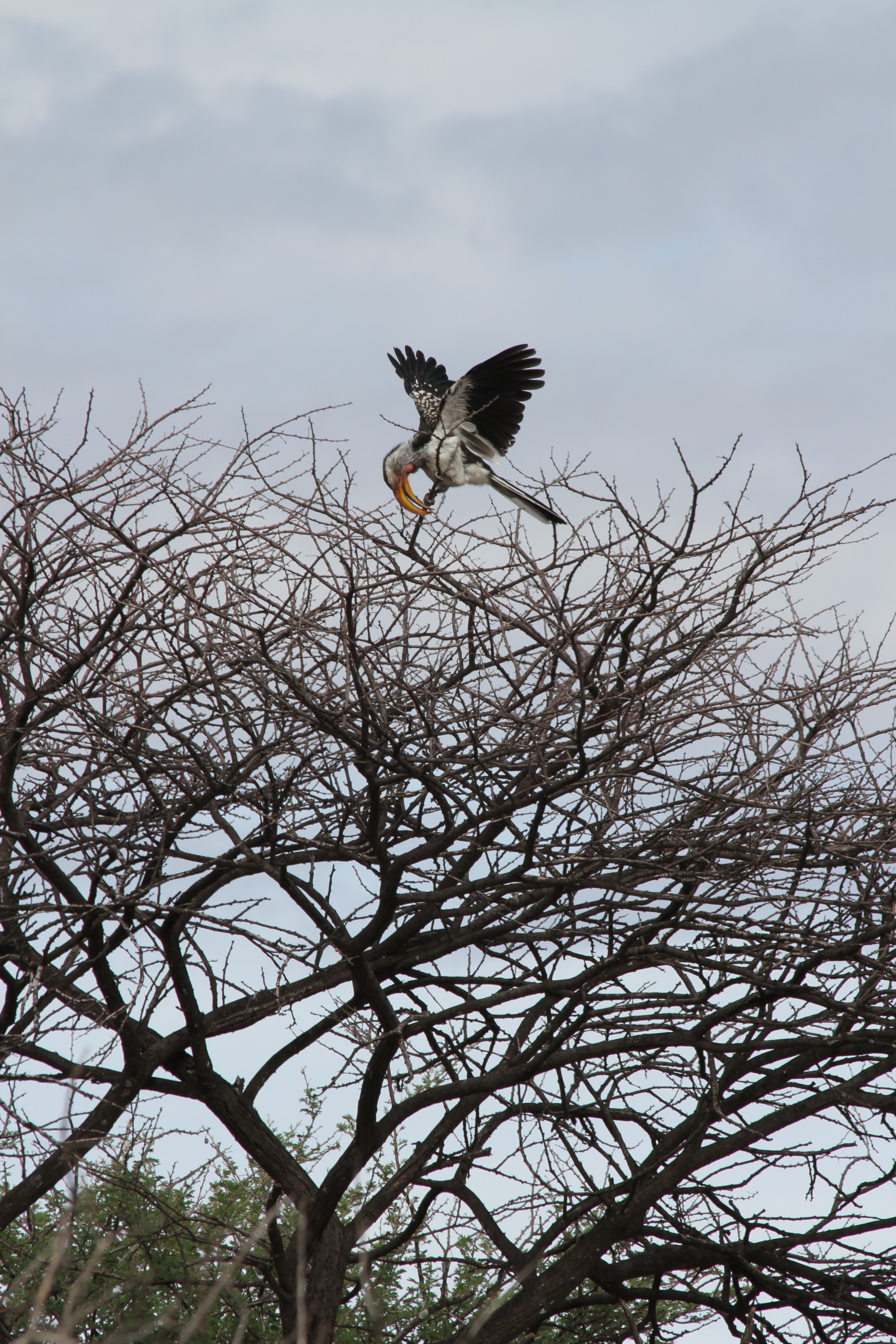Assessing the potential of the Monteiro’s Hornbill (Tockus monteiri) as a flagship species in Namibian conservation
January 1, 2017

Graduate Student Seed Grant Projects
Assessing the potential of the Monteiro’s Hornbill (Tockus monteiri) as a flagship species in Namibian conservation
INVESTIGATORS:
David Millican, Biological Sciences, Jeffrey Walters, Biological Sciences, Ashley Dayer, Fish and Wildlife Conservation
Namibia’s cavity-nesting guild is a large community of mammals, birds, reptiles, and invertebrates dependent upon an availability of tree cavities to breed. Initial surveys indicate that Namibia’s cavity-nesters may be severely limited by the availability of suitable nest cavities, and face intense competition for these nest sites. Due to Namibia’s arid climate, much of the landscape is depauperate of large, cavity-harboring trees. In addition, a dearth of excavating species increases the dependency on natural tree cavities for much of this community. Therefore, this community appears particularly vulnerable to disturbances that diminish cavity availability, of which there are many. Charcoal production, suppressed fire and grazing regimes, and an increased frequency of droughts due to climate change all threaten Namibia’s cavity nesting guild by either directly reducing cavity availability or by hampering the rate of cavity formation and replacement.
To garner attention and support for the conservation of this community, David and Human Dimensions of Wildlife Professor Ashley Dayer have embarked on a study to systematically assess the potential for one species to act as a surrogate for the whole cavity-nesting community. While surrogate species are often selected due to a significant ecological role (e.g. keystone species), some are chosen solely for their socio-economic significance. These species, known as flagship species, are used to attract the attention of stakeholders in order to raise funds for conservation and to change people’s behaviors.
Previous studies have found that species meeting flagship criteria are not guaranteed to be good flagship species. If a species does not capture the attention of local and international stakeholders, lackluster national support and poor fundraising can sink a flagship campaign. Therefore, to evaluate the likelihood that a species can act as a good flagship species, it is imperative to systematically assess sentiments towards that species. Combining methods from two studies by Dayer et al. (2007) Veríssimo et al. (2013), David and Dr. Dayer will conduct interviews with local communities throughout Namibia to understand the different perceptions these communities have about wildlife and cavity-nesting birds. These interviews will then be used to design a discrete-choice experiment, a marketing tool used to identify consumer preferences. In the case of flagship species selection, individuals will select from species profiles in order to identify which species and species characteristics are likely to gain the most support among local stakeholders and the international community.
First Year Project Update
David began conducting interviews in April 2017 with committees of wildlife conservancies. To date, David has met with 10 conservancies (Table 1), primarily in the western Kunene region. David will continue to conduct interviews through July 2017, expanding to Damaraland, Hereroland, and the Caprivi. David and Dr. Dayer will use these interviews to create discrete-choice experiments in the fall of 2017, before David returns to Namibia in December 2017. In spring 2018, David will administer this discrete-choice experiment to individuals throughout Namibia, as well as to international tourists, ensuring flagship species selection is based on the perceptions and values of local communities, who have the power to undertake conservation efforts, as well as the international community, whose awareness and financial contributions can provide incentive to local communities.
IN YEAR ONE, THE RESEARCHERS HAVE MET WITH THE COMMITTEES OF TEN WILDLIFE MANAGEMENT CONSERVANCIES.
- Anabeb
- Ehi-Rovipuka
- Eropupa
- Omatendeka
- Ombazu
- Ombombo
- Okanguati
- Puros
- Sesfontein
- Sorris-Sorris






